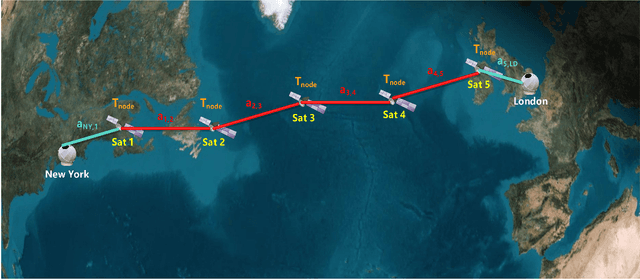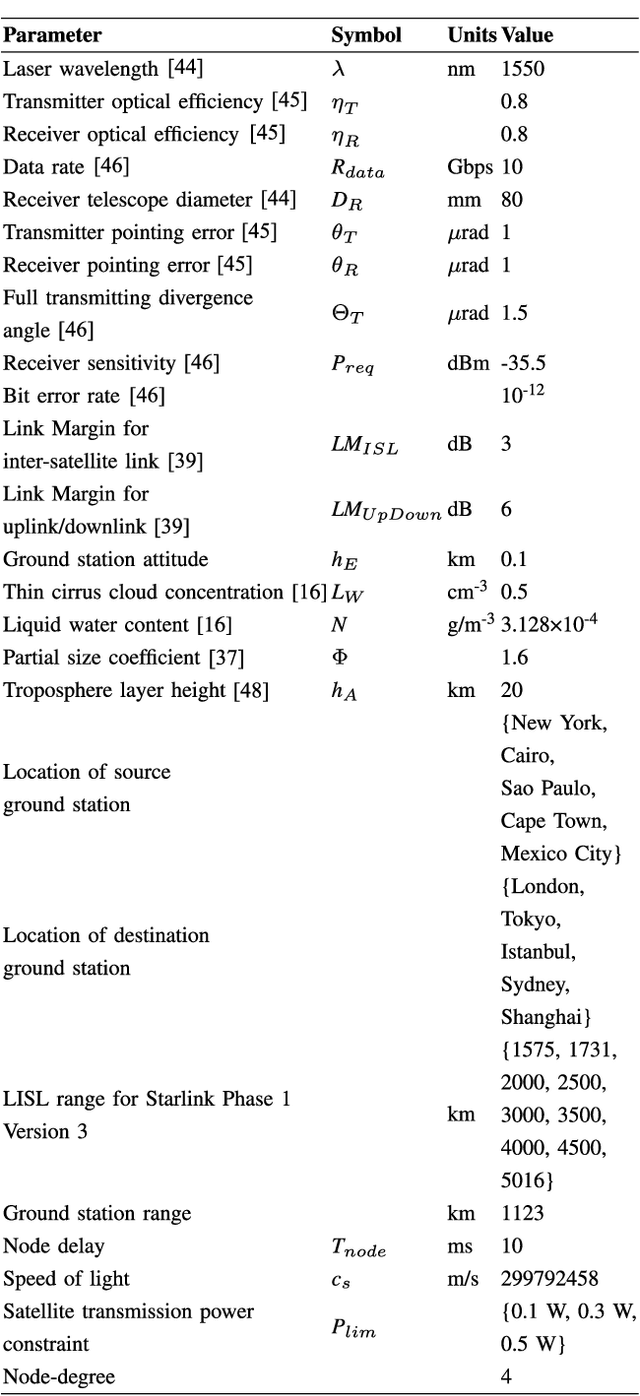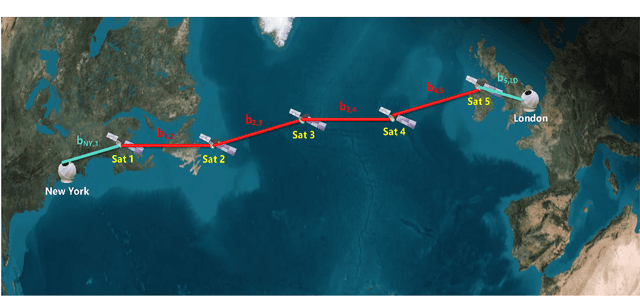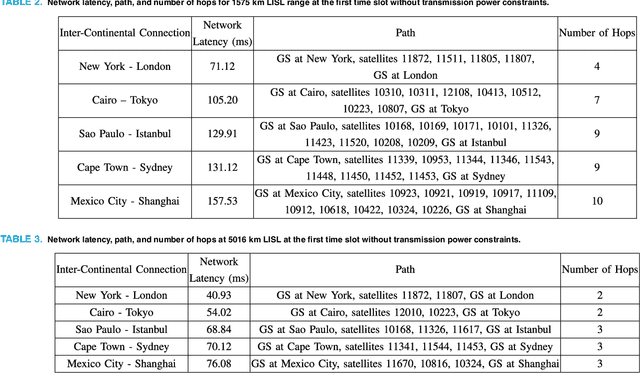Latency versus Transmission Power Trade-off in Free-Space Optical (FSO) Satellite Networks with Multiple Inter-Continental Connections
Paper and Code
Dec 08, 2023



In free-space optical satellite networks (FSOSNs), satellites connected via laser inter-satellite links (LISLs), latency is a critical factor, especially for long-distance inter-continental connections. Since satellites depend on solar panels for power supply, power consumption is also a vital factor. We investigate the minimization of total network latency (i.e., the sum of the network latencies of all inter-continental connections in a time slot) in a realistic model of a FSOSN, the latest version of the Starlink Phase 1 Version 3 constellation. We develop mathematical formulations of the total network latency over different LISL ranges and different satellite transmission power constraints for multiple simultaneous inter-continental connections. We use practical system models for calculating network latency and satellite optical link transmission power, and we formulate the problem as a binary integer linear program. The results reveal that, for satellite transmission power limits set at 0.5 W, 0.3 W, and 0.1 W, the average total network latency for all five inter-continental connections studied in this work levels off at 339 ms, 361 ms, and 542 ms, respectively. Furthermore, the corresponding LISL ranges required to achieve these average total network latency values are 4500 km, 3000 km, and 1731 km, respectively. Different limitations on satellite transmission power exhibit varying effects on average total network latency (over 100 time slots), and they also induce differing changes in the corresponding LISL ranges. In the absence of satellite transmission power constraints, as the LISL range extends from the minimum feasible range of 1575 km to the maximum feasible range of 5016 km, the average total network latency decreases from 589 ms to 311 ms.
 Add to Chrome
Add to Chrome Add to Firefox
Add to Firefox Add to Edge
Add to Edge